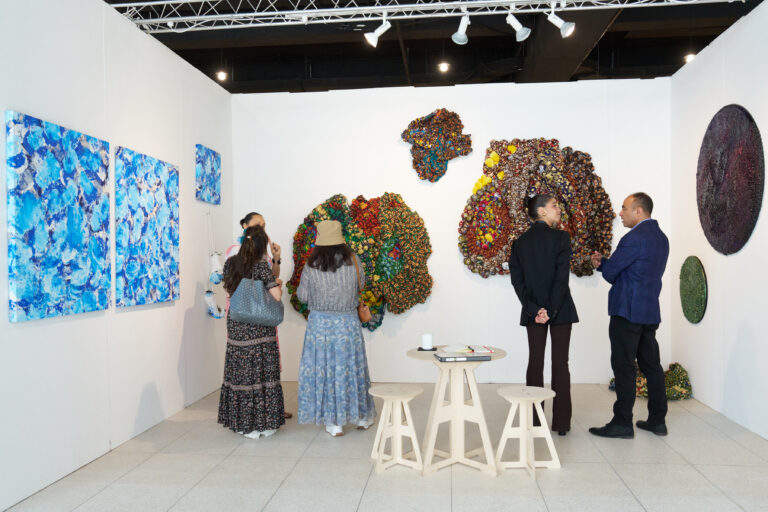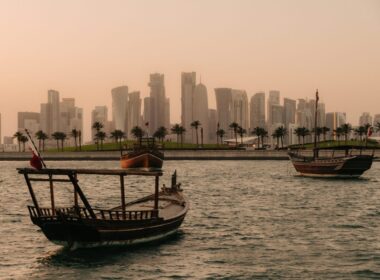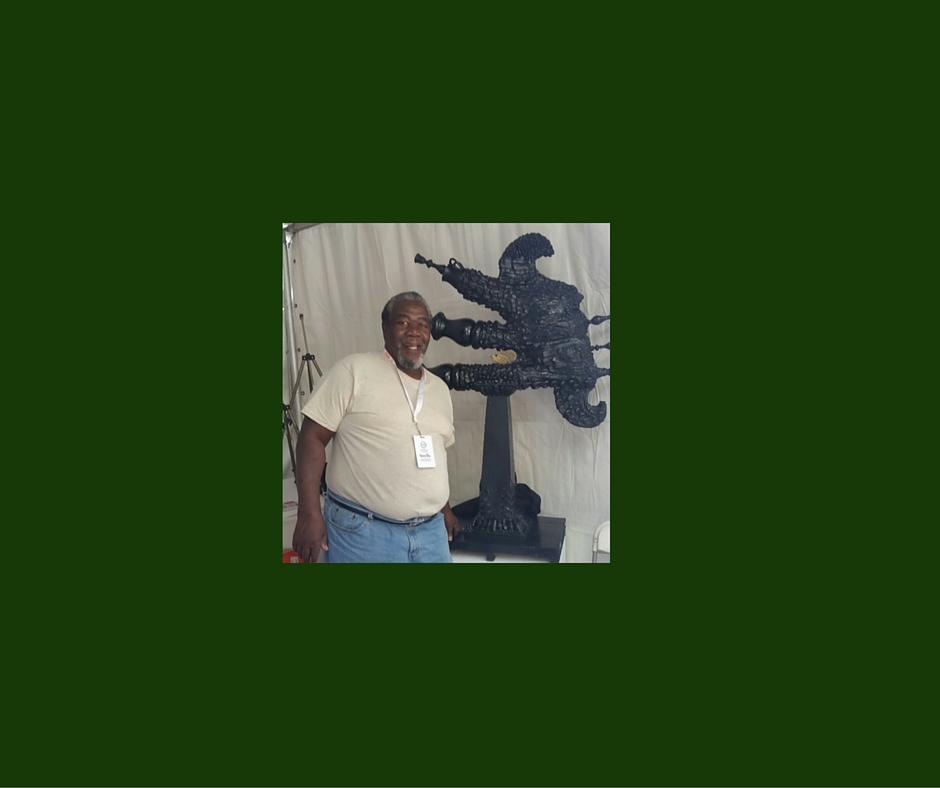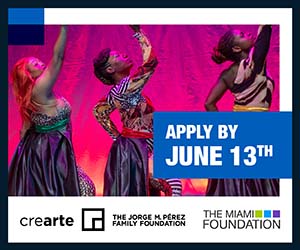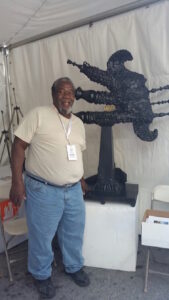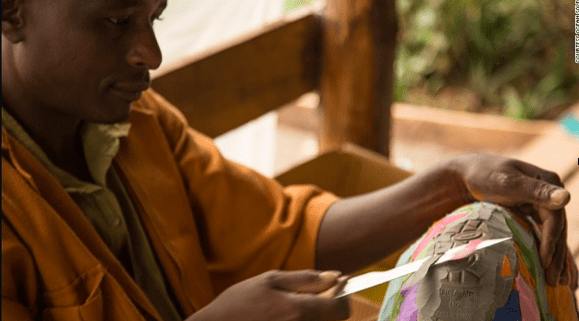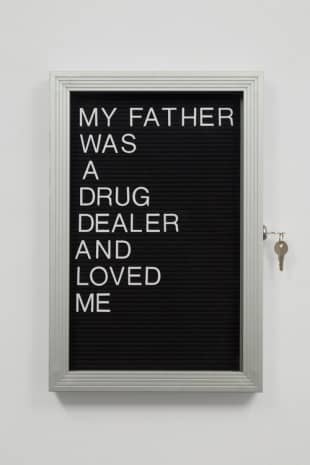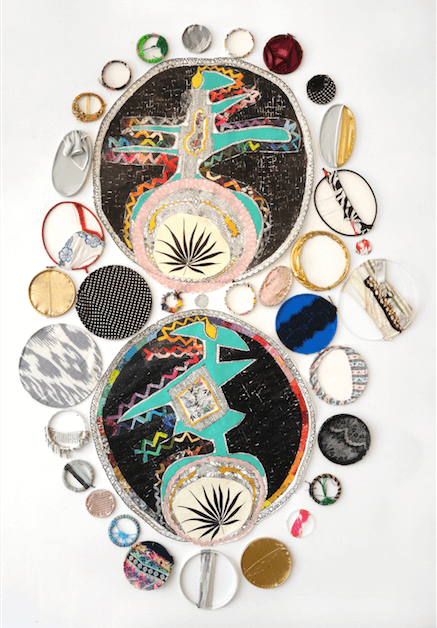I’ve been a fan of Robert McKnight’s work for a few years. His quiet demeanor, his solid work and most of all, his abstract pieces always made a positive impression on me. I want to document his work and background for the few that don’t know him or what he is known for.
Melissa Hunter Davis (MHD): Tell me about how you got started creating art? When did it begin for you?
Robert McKnight (RMcK): Art was a thing we did as kids. I had two brothers within one year of each other, and one of the things we did for entertainment was to sit around the television and draw pictures and go to competitions with each other. Who could do the best drawing, you know, so that was the way we started and it was a way to entertain ourselves when we had nothing other to do.
MHD: Creating art continued into high school and college?
RMcK: Yeah, high school… All through school, I used to get recognition from my work, so it became the thing to be recognized for my art. Teachers always had me do special assignments with drawing and painting.
MHD: Was that the reason you continued with art for college or had art became a passion for you?
RMcK: It was a passion, and it came to a point where I knew that that’s something I wanted to do. My senior year I ended up being asked to submit a portfolio to Syracuse because my art teacher’s Dean was transferring to Syracuse. He took the job as dean at Syracuse. He asked different art students to submit a portfolio with a chance of going there, and everything came through, and I went to school there with the idea of either teaching or doing some commercial lot. Once I got there, I got involved in the fine arts. I had a studio. I had a studio where I was doing concrete and painting, and that evolved into knowing that that’s what I wanted to do. I got out of the education department. The painting curriculum was wide open for me to do a lot of different studies of a lot of different subjects, so I got involved in mainly just pursuing fine arts instead of a teaching degree and a fine arts degree.

Tears for a Dying Sun by Robert McKnight
MHD: Once you completed school, when did you start your studio practice?
RMcK: Well when I got out of school, after doing a few jobs, odd jobs, I got a job with Miami-Dade County Zoo as an exhibit designer. I followed that for the last ten years, you know and on the side I started doing my studio practice. You know the job was paying for me to come home at night and spend some time in the studio doing my personal lot.
MHD: What is your philosophy about the work that you create?
RMcK: I’m about spontaneity. It’s about coming up with different concepts on how to approach the art and let the art, the technique, propel me to make a statement. Instead of starting out with a statement, I start out with materials and let the material guide me into developing a statement.
MHD: Do you chose the materials? Is it what’s on hand? Do you try to explore using new things? Is it dictated by a technique? How does that work for you?
RMcK: I’d say it’s dictated by the materials. Sometimes I come across a certain abundance of materials and from there I try to turn it into a voice.
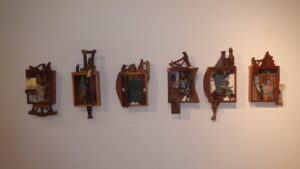
Collective Thinking by Robert McKnight
MHD: I’ve seen you work with different materials before. I saw you, as of late, explore jewelry making, you have grand pieces that you make out of paper, and that’s one of the things I’ve always admired about you, is that you always seem to be adventurous and that you like trying new things. What pushes you in that direction? Is it you just want to try new materials or things that you’ve done before, and you move back to it? What dictates the materials that you use?
RMcK: It’s an experimental thing. Aside from having that available, I tend to want to stretch the use of materials, instead of concentrating on the same thing. I want to have an experimental journey with different materials and then explore how they work and what can be done with them outside of the normal use of it.
MHD: With the type of work that you do, your presence at Kroma Gallery and the quality of your work, you’ve been able to move in many different directions and do lots of different things. Tell us a little bit about the public art that you’ve done.
RMcK: Well, I’ll start with what I learned at Miami Dade Metro Zoo. The idea was to make artificial rock formations to cover the exhibit, the night houses, and the fencing. After learning what could be done with steel, concrete, and paint, it gave me the confidence to want to try different materials in my art. The commercial end, that’s working with the size of things I worked with there. It added to the confidence that I could do with different material with the same quality of work that I was doing with the large concrete commercial pieces. I guess that would add that confidence to try different materials in different ways, various, pure materials. You know, because very rarely you get to work on the scale that I was working on Metro Zoo. There was a confidence already there to make it easy for me to venture out in different routes with different materials.
MHD: Then there was the large piece that you did in Miami that was a part of an apartment building that off of 79th street that was a part of the gentrification of that area. Can you talk about that piece?
RMcK: Part of the experimentation that I did, I started learning computer graphics, and it was to give me another tool. I did some computer rendering of an image, and when that project came up, I had like two or three days to come up with an idea and I reached into some of the computer renderings that I did and the one that was accepted, they liked them. Then the challenge was all right, how do I turn that computer rendering into a sixty-four-foot tall mural? I came across another program that translated images into a tile, which meant I had to learn another program. In a period, I managed to get that under my belt and learn it and we managed to get that tile pieces rendered in a digital program, which was sent to Mexico and each pixel was 3/8 inch and 3/8 inch of a foot. I don’t know the number right off hand but in that square footage, you would have all those pixels turned into color and translated. The hardest part was managing the colors and keeping everything in order. They reproduced the images and installed it and transformed into a very spectacular piece.
MHD: With that piece came a lot of attention. How did that change your collectibility? Did the project bring more attention or was it just another piece that you’ve done on a commercial scale?
RMcK: In a sense it put me on the map as far as people knowing who I was. It did add some collectibility to my work. I had two collectors that looked at my work. It was slow as I did a few more. I did one in Little Haiti and then I had all of this time laying around and started doing sculpture with it, doing tile sculpture pieces. One of the collectors came about, and we did a show at the Farside Gallery in Westchester. Along with that show, part of the deal was they would do an article on me, and that article was in sculpture magazine, which featured the sculptors out of the tile mural and turned them into 3-D sculpture. That was a nationally publicized story and that, alone with the mural kind of skyrocketed my reputation.
MHD: How do you feel about the Black visual arts community here in South Florida? Do you think that they receive the respect that they should? If they don’t, why or why not?
Robert: There is still some room to grow on that with the respect that we get. To say why people tend to look to Latin American art. I have a great amount of respect for Latin artists, but in some sense, we get overlooked. We get under-represented. One of the things that has happened to me is one of my great friends and great promoters happens to be one of the leading Latin American artists, Cuban artists, in Miami, Glexis Nuvoa. What he has done for me is argued amongst his peers and his collectors that I am included in a lot of publications that would ignore me. There are artists, Latin artists, and him being one that is trying to make sure that artists in color are included in the publications and the context of art in Miami. He was responsible for getting me involved in the last show for the art book A Hundred Degrees in the Shade. They called it Hundred Degrees, a hundred artists, Hundred Degrees in the Shade; a survey of South Florida artists. In that book, I mean if it weren’t for him, I would not have been included. Other artists included was Onadjide Shabaka, I think Xaviera Simmons and outside of that, I think I could only find the 3 of us. That was supposed to be a survey of South Florida artists.
MHD: Wow!
RMcK: So how could you know, how could you walk through South Florida and only see three artists? Oh, Pervis Young was in it.
MHD: Okay.
Robert: You know, giving him due credit. There’s still a lot of work that we have to do. You mentioned Kroma. Kroma Gallery is adding to that because it’s taking over an area where Black art started with the Black Arts Workshop and it’s filling that gap where there are artists. There’s a prominence of Black art that’s resting in the Coconut Grove area, which is always a prominent art destination. You know, so that should help us out.
MHD: We’ve talked about your work. We’ve talked about your thoughts. My next question is, what inspires you to create? Is it certain music that inspires you? Is it life? Is it your grandchildren? What is it that sparks that creativity in you?
RMcK: Every day I wake up and take a deep breath. I was given a gift of expression, and I think it’s … I mean it’s not thinking. It’s a duty that I have to channel it and put it out there for people to see.
MHD: Before I go, can you name three artists of African descent that are here in South Florida, that people need to pay attention to right now, someone who is doing something exciting and creative.
RMcK: Tavare Hill, Donald McKnight, and the third one Onadjide Shabaka.
MHD: What is it about their work that people need to observe?
RMcK: Tavare Hill is young, passionate and full of energy. Donald McKnight is you know, my brother. You know? He has a strong desire, an intense, subtle message of his style of work. Onadjide Shabaka is one of the ultimate professionals. I mean the way he approaches his work and the message behind it because it’s all about health. He takes a walk and collects pieces to add to his work, and it’s all based on the fact that he’s doing that thing that we all need to do is that exercise. Every time I talk to him, I say “ I need to take a walk along with you.” It is his way of practicing his art. When you get down to it, it’s a strong message.
MHD: Got you. What do you have coming up next? Where can we see your work over the next six months?
RMcK: I have a commission for All Aboard Florida. They’re still constructing the building. I’ll be on that for six months plus probably another year. Oh, the other thing I’m a part of re-establishing the Oscar Thomas exhibit under the Oscar Thomas Foundation at the African Heritage Cultural Arts Center.
Learn more about Robert McKnight here.
